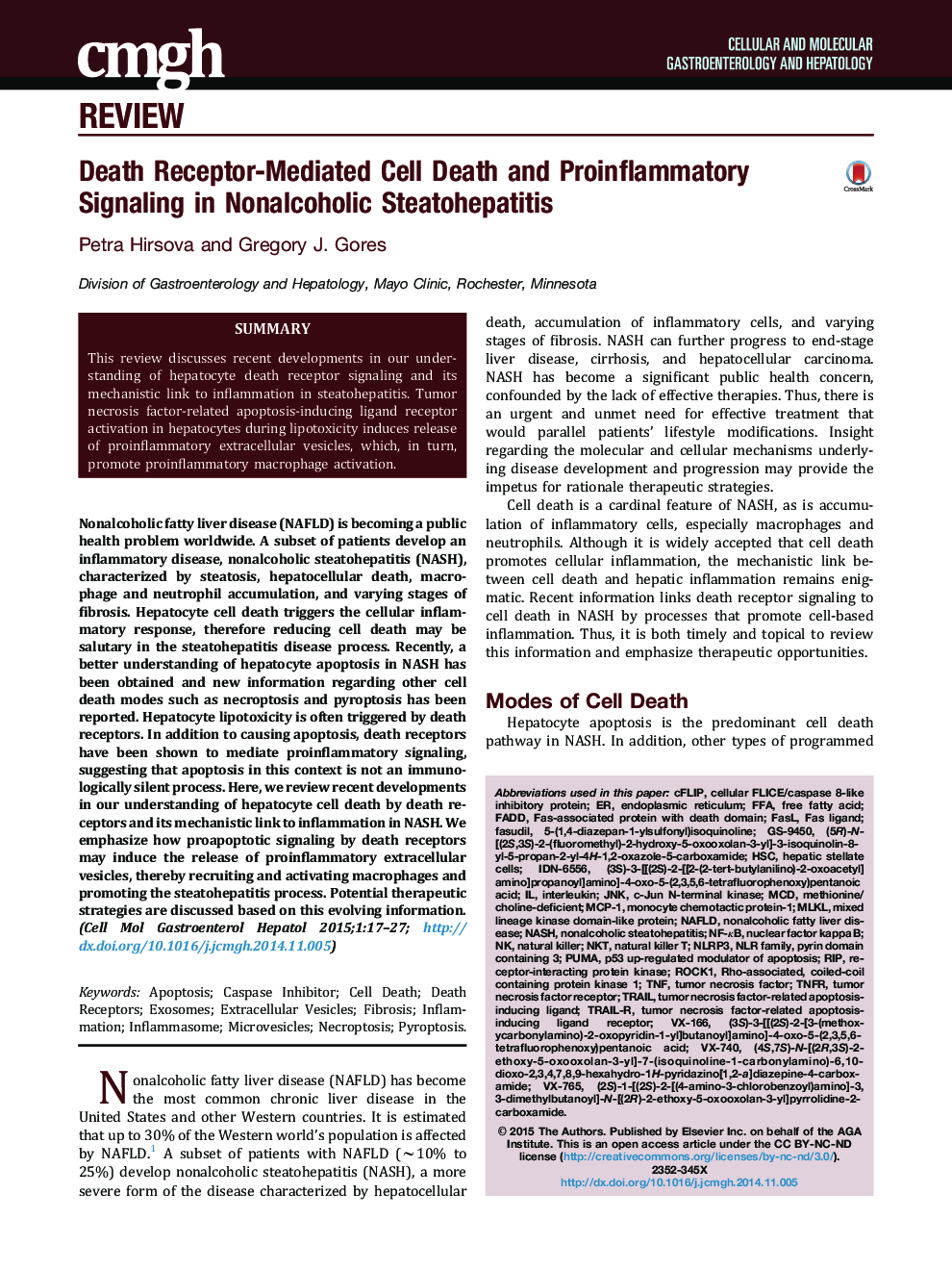| Article ID | Journal | Published Year | Pages | File Type |
|---|---|---|---|---|
| 2041780 | CMGH Cellular and Molecular Gastroenterology and Hepatology | 2015 | 11 Pages |
Nonalcoholic fatty liver disease (NAFLD) is becoming a public health problem worldwide. A subset of patients develop an inflammatory disease, nonalcoholic steatohepatitis (NASH), characterized by steatosis, hepatocellular death, macrophage and neutrophil accumulation, and varying stages of fibrosis. Hepatocyte cell death triggers the cellular inflammatory response, therefore reducing cell death may be salutary in the steatohepatitis disease process. Recently, a better understanding of hepatocyte apoptosis in NASH has been obtained and new information regarding other cell death modes such as necroptosis and pyroptosis has been reported. Hepatocyte lipotoxicity is often triggered by death receptors. In addition to causing apoptosis, death receptors have been shown to mediate proinflammatory signaling, suggesting that apoptosis in this context is not an immunologically silent process. Here, we review recent developments in our understanding of hepatocyte cell death by death receptors and its mechanistic link to inflammation in NASH. We emphasize how proapoptotic signaling by death receptors may induce the release of proinflammatory extracellular vesicles, thereby recruiting and activating macrophages and promoting the steatohepatitis process. Potential therapeutic strategies are discussed based on this evolving information.
